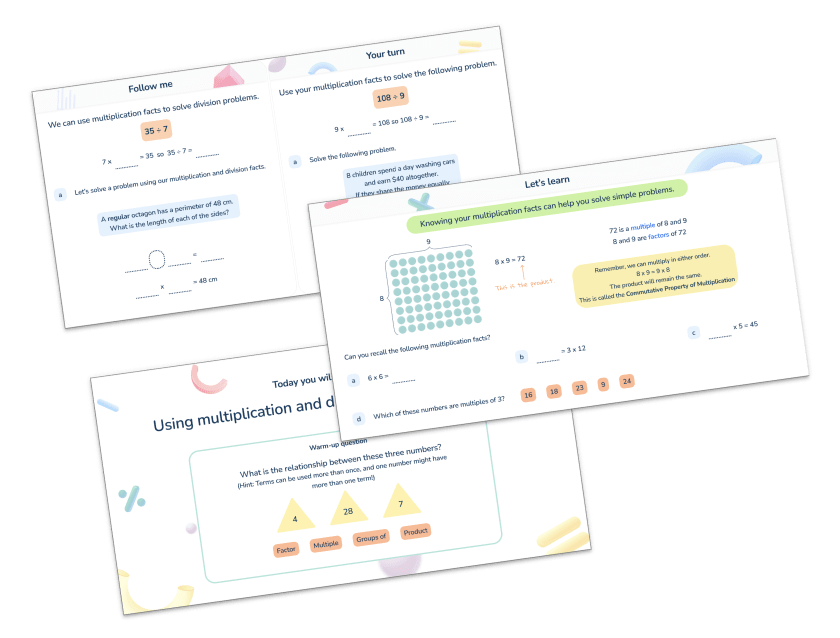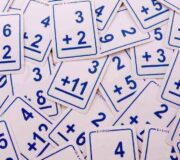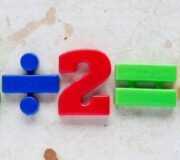Teaching Subtraction In 4th And 5th Grade Interventions: How To Identify and Plug The Most Common Learning Gaps
Want to know how to teach 4th and 5th grade subtraction? You’ve found the right place!
This post is part of our interventions bootcamp series: designed to support 4th and 5th grade teachers and booster group leaders achieve age-related expectations with students who need that extra support.
This is the second post in our new elementary bootcamp series for 4th and 5th grade teachers on common math topics and misconceptions such as addition, subtraction and fractions.
The differentiated guidance is particularly aimed at those running interventions in school but is also relevant much more widely to your whole class teaching, supporting a mastery approach, to help you ensure each child is getting appropriate support and challenge.
4th Grade and 5th Grade End of Year Math Assessments
Assess math progress for the end of grades 4 and 5 or prepare for state assessments with this assessment
Download Free Now!Structure of this 4th and 5th Grade Subtraction Intervention Plan
- First you’ll diagnose where children are struggling with ‘the nuts and bolts’ of that area of Mathematics.
- Next you’ll track back to the different stages of understanding and examine what the misconception might be in detail.
- Finally we’ll give you strategies that can be used with whole classes, booster groups or alongside 1 to 1 interventions.
We help you solve problems such as
- They just don’t understand subtraction like they do with addition…why?!
- Why do they keep making mistakes with their regrouping?
- How do I stop them switching around the numbers they are subtracting?
Before You Start: Work Out students’ Key Misconceptions With Subtraction
From the below children, find the best fit for those you are looking at. Then use this to guide where in the post to read for support:
Karah likes a chat and can reason well during whole class discussions. However, she struggles during independent sessions and her mind wanders. She knows some number facts to 10 but her recall is a little sketchy. She enjoys the formal written method of addition and usually calculates correctly with one carry/regroup.
On tests, she tends to only use written methods when shown an arithmetic calculation rather than a problem. When tackling written subtraction she frequently switches numbers (e.g. in 471 – 328, for the ones she will calculate 8-1 rather than 1 – 8 and regroup). Stage: EMERGING
Tom loves written addition and he will often choose it as his preferred method. Even when attempting what should be a subtraction word problem! During daily practice of written subtraction he sometimes calculates correctly but makes mistakes with regrouping, particularly when having to regrouping over multiple columns such as in 407 – 138. Stage: DEVELOPING
Oliver has extremely quick recall of addition and subtraction facts to 20. He often works things out mentally quicker than his teacher. He does, however, overuse his mental strength when he should use a written method which leads to unnecessary errors. He also sometimes chooses the incorrect type of calculation to solve problems. Stage: SECURING
Aaliyah struggles with remembering number facts to 10, particularly subtraction. She doesn’t yet fully understand what ‘subtraction being the inverse of addition’ actually means. Aaliyah doesn’t offer suggestions in class and often appears to be playing catchup with what is being learned.
She learns through repetitive practice but can’t apply it in context. She is used to having a teaching assistant support children on her table and is over reliant on the support. Stage: PRE-BOOSTER

Meet Skye, the voice-based AI tutor making math success possible for every student.
Built by teachers and math experts, Skye uses the same pedagogy, curriculum and lesson structure as our traditional tutoring.
But, with more flexibility and a low cost, schools can scale online math tutoring to support every student who needs it.
Find out more
4th and 5th Grade Subtraction Emerging
For a child like Karah, although she is not fluent with number facts to 20, the focus of the booster should be on developing understanding of how to use the written method of subtraction.
What about their bonds and number facts?
Some aspects of a students’ math fluency don’t need to be taught through resource intensive boosters. Practice of number facts can be done just as well, if not better, using online math games or even worksheets.
Step-by-step regrouping using straws
- Go back to the beginning of regrouping by using straws to demonstrate and let children practice the process (most misconceptions in subtraction come from a lack of understanding of the regrouping process).
- For example, in 53 – 12, have straws in 5 bundles of ten with elastic bands to group and 3 on their own.
- It is vital that children understand that unlike addition, where they are building both numbers, subtraction is the process of removing an amount from another. Therefore, children only build the amount they ‘have’ (the minuend number) in preparation to remove an amount (the subtrahend number).
- In the example, children should remove 2 of the 3 individual straws. They should then remove 1 of the bundles of ten (taking 12 away in total).
- Give children a short amount of time to do the same with a few calculations just with tens and ones. Straws can then be revisited with children who are not fully understanding regrouping with base 10 equipment.
Step-by-step base 10 method
- Now swap out straws for base 10, making sure children understand that the long ‘tens’ are the same as a bundle of straws.
- At this stage, get the children to layout their base ten on a hundreds, tens, ones (HTO) place value frame (which can be drawn on whiteboards).
- Quickly after this, re-introduce the formal written addition layout while using the base 10 on place value grids alongside it.
- Try by working with the calculation 251 – 125.
- When children need to regroup, as with this example, time should be taken. Deep understanding at this stage will enable faster progress later on. Once it has been established that there are not enough ones to take 5 of them away, children should ‘swap’ (regroup) one of the tens to 10 ones. It is recommended that children put the ten to be swapped in an ‘regroup’ area as it is common for children to think they are taking this ten away. They can then get 10 ones and also put those in the regroup area. Then the ten can be removed. It is important to emphasize to the children that the amount now in the regroup area is still ten and the number they have is still 251, it has just been made into 200 + 40 + 11.
- The children should then remove 2 tens from the remaining 4 tens, followed by removing 1 hundred from the 2 hundreds.
- If issues persist, as mentioned previously, return to using straws to model and practice the regrouping process.
When children can confidently regroup once in a calculation using base ten, without error, they are ready for the next stage of the booster – ‘Developing’.
4th and 5th Grade Subtraction Developing
Children like Tom, who like to use written methods but still make frequent mistakes should be working towards eliminating those errors by tackling misconceptions and multiple regroupings. They can then begin applying their increased fluency in word problem contexts.
Step by step from base 10 to worded problems
- Begin by using base 10 equipment on place value charts.
- Give calculations that involve two regroupings such as 435 − 269. Get the children to look at the calculation before they start. Nudge them into noticing the double regroup. This will support their understanding as they go through the calculation. Children go through the regrouping process for the 3 − 9 ones.
- Next, when faced with the 2 remaining tens, discuss what is different when subtracting 6 tens from the 2 remaining tens. IE. Nothing. The same process is followed.
- Children then complete the calculation, subtracting from the remaining hundreds.
- Introduce the written method alongside future calculations with base 10 equipment or place value counters on place value charts. When children are confident with double regrouping, move to step 3.
- Still with concrete resources alongside the formal method, introduce children to regrouping across digits with 0 in. For example, 305 − 237. By now the children should be proficient at instantly noticing they will need to regroup because of 5 − 7 and 0 tens − 3 tens. Allow them to begin calculating 5 − 7. Watch closely when they realize they can’t regroup from the tens as there are none.
- Allow them time to think and discuss as the more they can solve this themselves using their prior knowledge, the better they will do when calculating these situations independently. Using a mix of yours and children’s explanations, model how we must exchange the hundred with 10 tens and then we can exchange one of those tens with 10 ones. Our calculation then becomes 2 hundreds, 9 tens, fifteen ones. We can now subtract 7 ones away. The rest of the calculation should be straightforward as long as the children are correctly following the written method alongside the concrete resources:
- It is important the children begin to be more mindful, paying attention to potential additional regroupings once the calculation is in process. For example, in the calculation 6,149 – 1,162 there appears to be only 1 regrouping (4 tens – 6 tens) but after exchanging a hundred so there are enough tens to subtraction, there would be 0 hundreds left to subtract 1 hundred from.
- From this point, the children need repetitive practice in different contexts whether straightforward calculations, simple worded problems, or measure contexts. When calculating these the children should focus on sharpening their written method layout and method. This will aid in avoiding errors. The teacher should continuously remind children during this stage of the links between their regrouping marks in the written method and process undertaken with concrete resources. The children should become less and less dependent on using concrete resources during this stage.
- If children struggle to see the addition word problems and your children are familiar with bar models, get them to speedily draw one in order to visualize the problem. Once children like Tom are able to calculate with a good level of fluency and accuracy, they are ready to secure their understanding of subtraction.
4th and 5th Grade Subtraction Securing
The kind of booster that a child like Oliver needs, is less step by step and rather just support to enable him to make good choices regarding when to use the written method of addition and apply this to different contexts such as word problems and missing numbers
A simple and key strategy at this stage is to present calculations horizontally rather than in the vertical written method form. Many children will see this as an instruction to calculate mentally, particularly if they are strong in mental arithmetic. Where this occurs, encourage the children to look at the columns (potentially re-writing vertically) to look for regrouping.
Train the children to be mindful as has occurred in ‘Developing’ and look for the amount of regroupings to guide them on whether they can calculate mentally or with the written method. Nudge them when they ‘they are at their capacity’ when calculating mentally to switch to a written method rather than persist, likely making unnecessary errors.
Where children refuse to switch to a written method, despite making errors mentally, get them to calculate mentally and then do the written method. It is likely that with more complex and large calculations, they will make more errors with the mental method. Once they see this, they will be more likely to accept the need to sometimes use the written method.
Introducing finding the difference calculations
From kindergarten onwards, children will be given problems with subtraction ‘finding the difference’ rather than ‘taking away’ but children often struggle to see these problems as subtraction and even more so as finding the difference. If this is the case for children like Oliver, give them a range of finding the different problems they may face.
E.g. involving bar charts, worded problems using language such as ‘How many more’ or ‘How many left’ and anything else that leads to comparisons between amounts. At this late stage it is more time efficient to quickly recap what finding the difference actually means and give plenty of examples. A suggested recap is to draw this part part whole model:
Using a bar model or a number line, give the children a simple finding the difference calculation such as ‘In this survey, how much more popular was Fruit Loops compared to Rice Krispies?’ Explain that whenever you are comparing, you will be finding the difference and when you do that, you do a subtraction calculation.
Introduce a range of contexts, units and sizes
The children should be given a range of contexts for their calculations such as the use of distance, mass and capacity where unit conversions can also be brought in to add a layer of complexity. Encourage children to make jottings to the side when they are converting.
If the introduction of different units throws the children, ensure you are giving them bare practice calculations such as 7245m – 3686m at the same level they have been practicing before introducing word problems or unit conversions.
Money introduces decimals and is a further stage. For some children, they may need to use plastic or real money on a place value frame. If so, use the strategies discussed earlier but in a money context to enable their understanding.
To aid understanding that the decimal place is fixed, get them used to drawing the decimal place in the formal written method answer box before they begin answering it. This is the same in a money context or with any larger decimals. See our subtraction worksheets for more ideas.
You could also try the free Place Value Chart resource on these children to clarify the position of the decimal point – it’s a resource that proves very effective with all age groups.
If your students have gaps that still need to be filled don’t panic! Get in touch with our schools team who can arrange a free demo of our one-to-one math interventions.
Other articles in this ‘4th and 5th grade math interventions’ series:
- How to teach addition
- How to teach fractions
- How to teach place value
- How to teach algebra
- How to teach multiplication
- How to teach division
- What Is The Sum?
Do you have students who need extra support in math?
Skye—our AI math tutor built by experienced teachers—provides students with personalized one-on-one, spoken instruction that helps them master concepts, close skill gaps, and gain confidence.
Since 2013, we’ve delivered over 2 million hours of math lessons to more than 170,000 students, guiding them toward higher math achievement.
Discover how our AI math tutoring can boost student success, or see how our math programs can support your school’s goals:
– 3rd grade tutoring
– 4th grade tutoring
– 5th grade tutoring
– 6th grade tutoring
– 7th grade tutoring
– 8th grade tutoring
The content in this article was originally written by deputy headteacher Pete Richardson and has since been revised and adapted for US schools by elementary math teacher Christi Kulesza.







